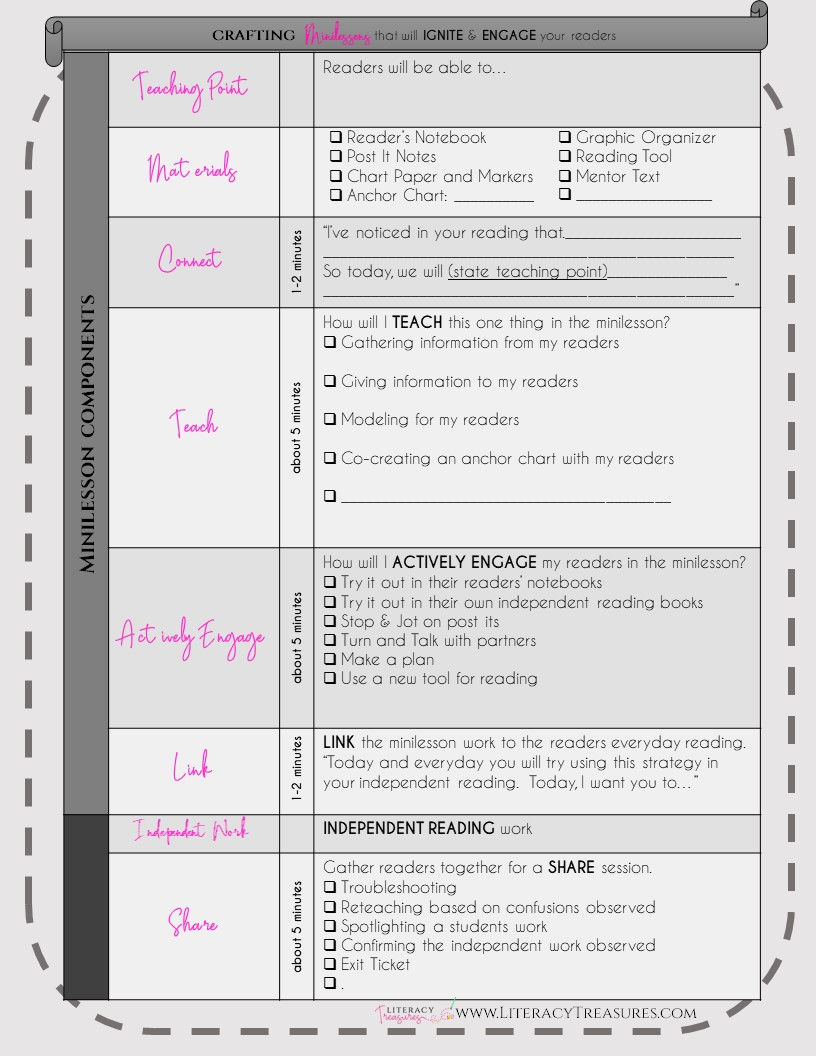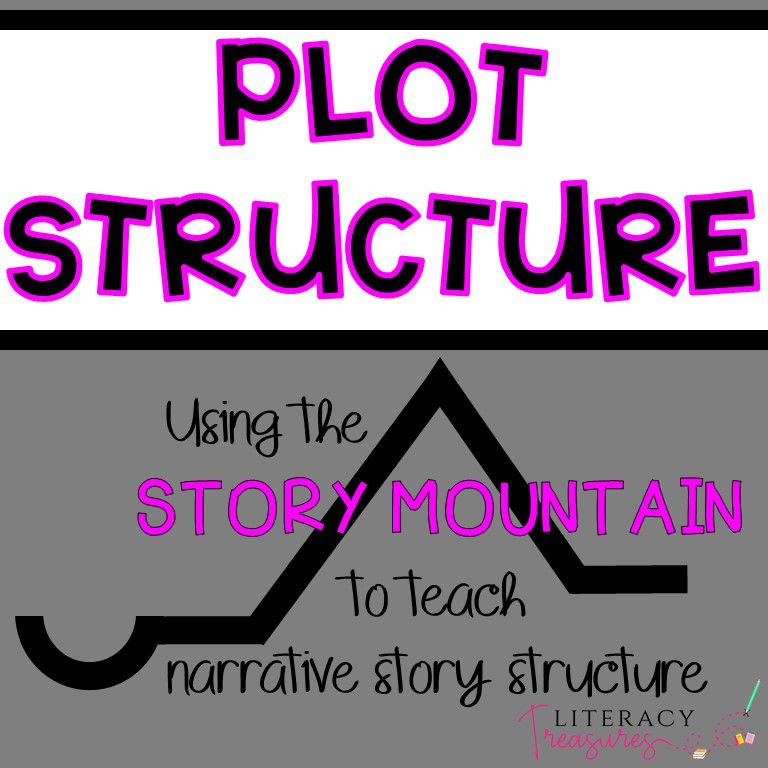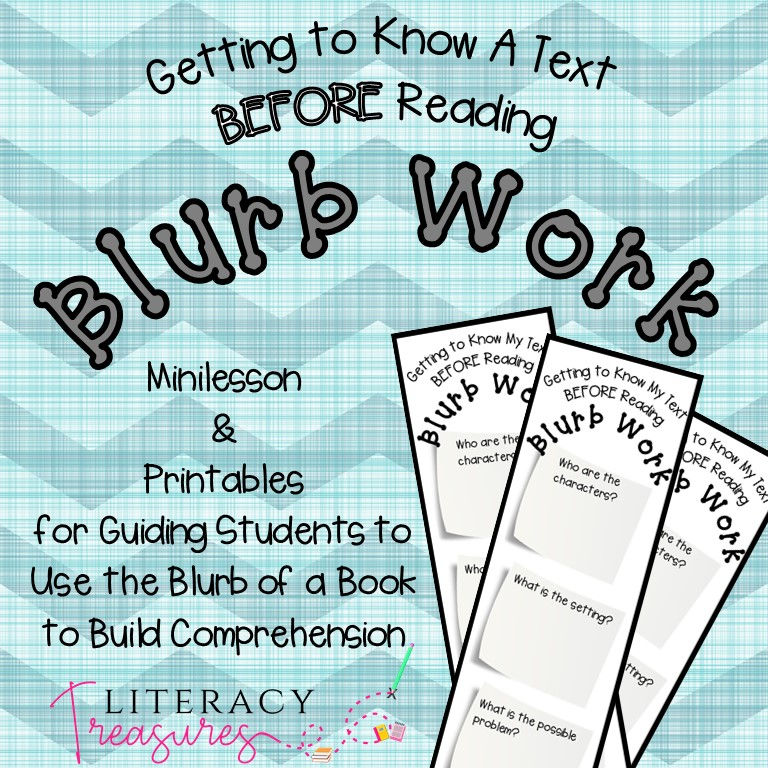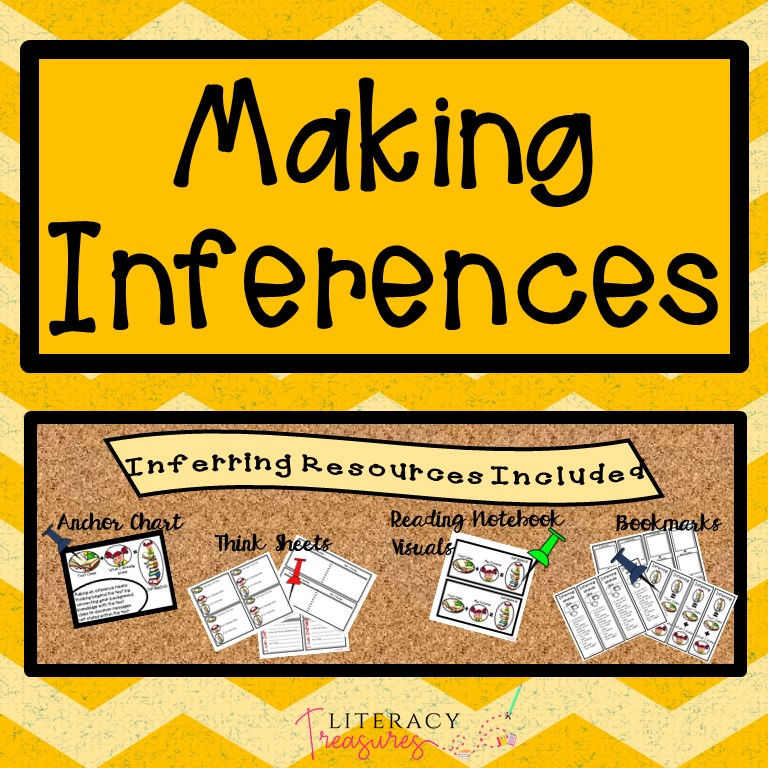
It's so important to keep readers actively engaged in their reading.
When students are engaged in the minilesson and practice the reading work, that engagement strategy or tool can be carried through into independent reading.
Active engagement strategies can be general or specific to the lesson. Having some general engagement tools and strategies at your fingertips work well when you have to make a change 'on the fly' like I'm sure you have to do so often when your students take you in a direction not mapped out in your lesson plan.
Readers can lead you in so many different directions within a lesson, but that's what we're looking for...independent readers and thinkers wanting what they need when they need it.
Grab my FREE Mini-Course with this handy planning cheat sheet
Active Engagement Strategies & Tools are what get the reader practicing the lesson strategy or skill within their own independent reading.
When readers are practicing the strategy they are actively "having-a-go" with the reading work. It's here that we can see just what that reader needs to keep them moving forward.
Active Engagement Strategies
Stop and Jot
Students who are stopping and jotting their thoughts and reactions to text are actively interacting with the text.
Readers don't necessarily know how to interact with text when using a new strategy, so when you guide them through that work within text, they are better equipped to try it out.
This could happen on post-it notes or a simple organizer created in the Reader's Notebooks.
Readers could be stopping and jotting about the text being used in the lesson or they could try to strategy out by stopping and jotting within their own independent reading book.
Partner Talk--Turn & Talk
Students need to have time to talk to each other about text.
When students take the time to put their thinking into words they are better equipped to bring that kind of thinking into their independent reading. Who knows...they may pick some good thinking strategies up from their partners.
Partner talk is initiated by an open-ended question you will pose about the strategy and/or the text being used in the lesson.
Make a Plan
When readers are shown a new tool or strategy in the Teach component of the minilesson, they may need time to process that and make a plan for how they are going to use that within their own independent reading.
Readers could process and make a plan with a partner or triad of readers.
Readers could process and make a plan independently and then share with you either verbally or written out for you before moving out to independent reading.
Active Engagement Tools
Organizers & Think Sheets designed for the lesson strategy or skill
Reflective questions designed specifically for the minilesson work such as questions that specifically ask "How does (insert strategy or lesson point) help you as a reader?"
For example, "How does visualizing as you read a story help you comprehend and understand the text?" or "How does building your reading stamina help you as a reader?"
Bookmarks designed for the lesson strategy or skill that provides your readers with key information from the lesson such as with key points to remember, tips or tricks, etc.
Infographics or Mini Anchor charts specific to the strategy or skill that can be placed in the Reader's Notebook for reference during independent reading
Until next time,

You may be interested in these reading tools
to actively engage your readers


















Comments